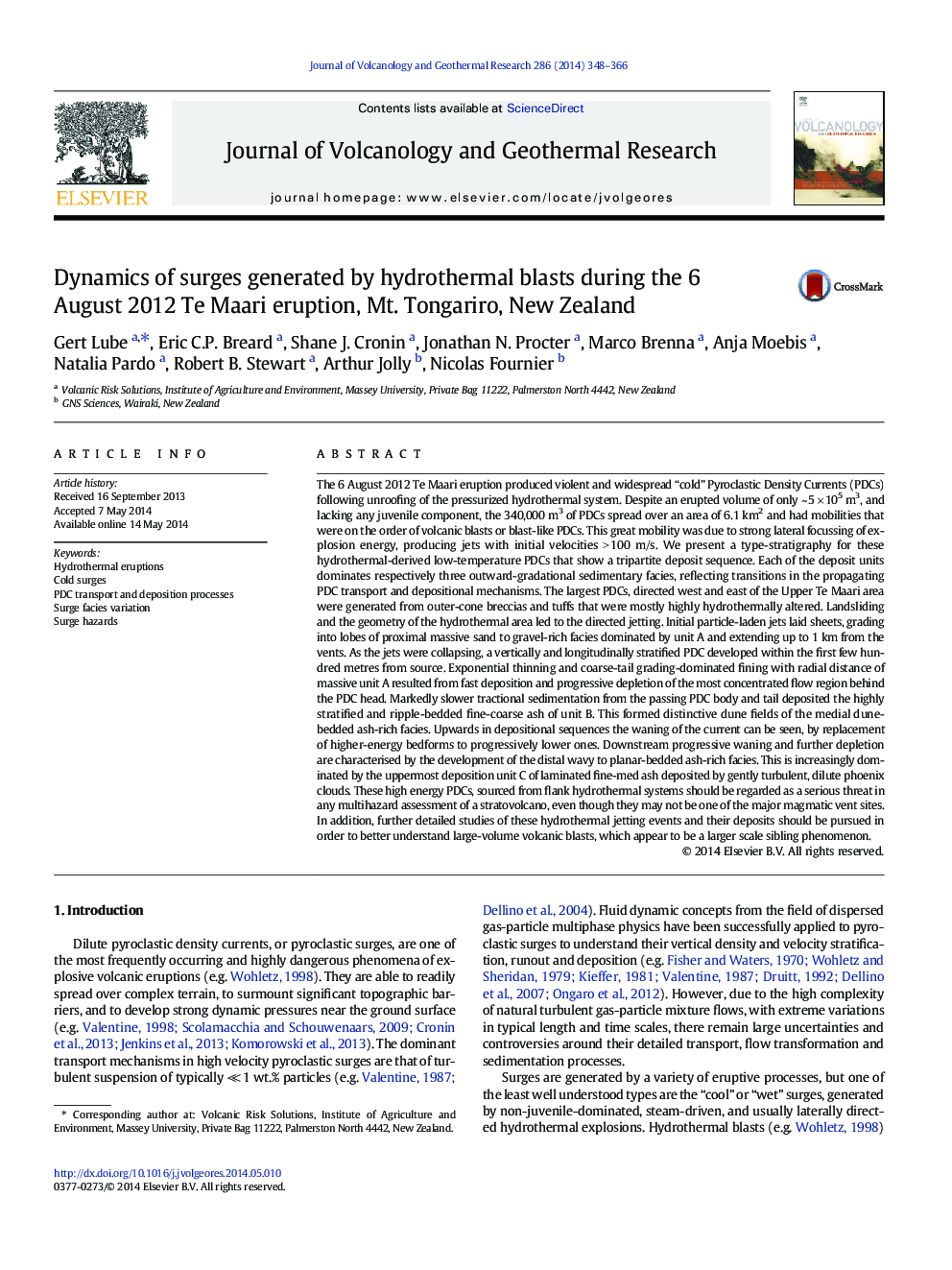| کد مقاله | کد نشریه | سال انتشار | مقاله انگلیسی | نسخه تمام متن |
|---|---|---|---|---|
| 6439691 | 1638336 | 2014 | 19 صفحه PDF | دانلود رایگان |

The 6 August 2012 Te Maari eruption produced violent and widespread “cold” Pyroclastic Density Currents (PDCs) following unroofing of the pressurized hydrothermal system. Despite an erupted volume of only ~Â 5Â ÃÂ 105Â m3, and lacking any juvenile component, the 340,000Â m3 of PDCs spread over an area of 6.1Â km2 and had mobilities that were on the order of volcanic blasts or blast-like PDCs. This great mobility was due to strong lateral focussing of explosion energy, producing jets with initial velocities >Â 100Â m/s. We present a type-stratigraphy for these hydrothermal-derived low-temperature PDCs that show a tripartite deposit sequence. Each of the deposit units dominates respectively three outward-gradational sedimentary facies, reflecting transitions in the propagating PDC transport and depositional mechanisms. The largest PDCs, directed west and east of the Upper Te Maari area were generated from outer-cone breccias and tuffs that were mostly highly hydrothermally altered. Landsliding and the geometry of the hydrothermal area led to the directed jetting. Initial particle-laden jets laid sheets, grading into lobes of proximal massive sand to gravel-rich facies dominated by unit A and extending up to 1Â km from the vents. As the jets were collapsing, a vertically and longitudinally stratified PDC developed within the first few hundred metres from source. Exponential thinning and coarse-tail grading-dominated fining with radial distance of massive unit A resulted from fast deposition and progressive depletion of the most concentrated flow region behind the PDC head. Markedly slower tractional sedimentation from the passing PDC body and tail deposited the highly stratified and ripple-bedded fine-coarse ash of unit B. This formed distinctive dune fields of the medial dune-bedded ash-rich facies. Upwards in depositional sequences the waning of the current can be seen, by replacement of higher-energy bedforms to progressively lower ones. Downstream progressive waning and further depletion are characterised by the development of the distal wavy to planar-bedded ash-rich facies. This is increasingly dominated by the uppermost deposition unit C of laminated fine-med ash deposited by gently turbulent, dilute phoenix clouds. These high energy PDCs, sourced from flank hydrothermal systems should be regarded as a serious threat in any multihazard assessment of a stratovolcano, even though they may not be one of the major magmatic vent sites. In addition, further detailed studies of these hydrothermal jetting events and their deposits should be pursued in order to better understand large-volume volcanic blasts, which appear to be a larger scale sibling phenomenon.
Journal: Journal of Volcanology and Geothermal Research - Volume 286, 1 October 2014, Pages 348-366